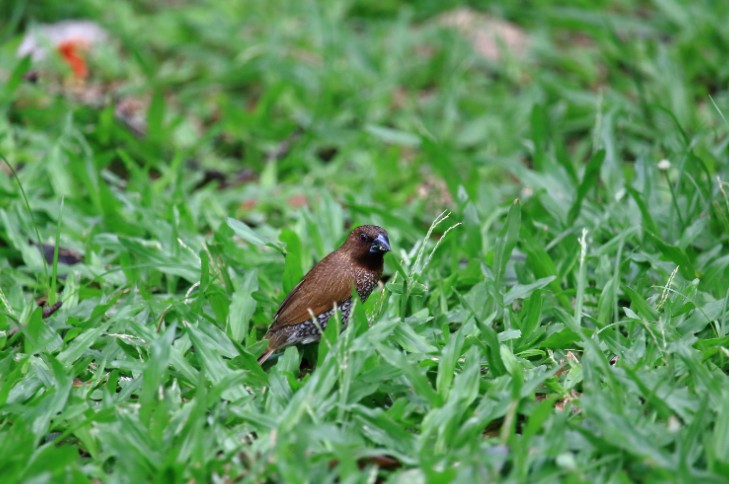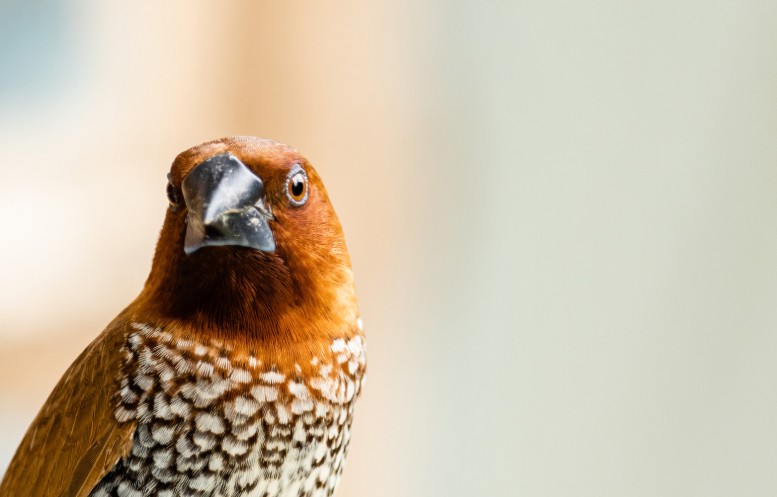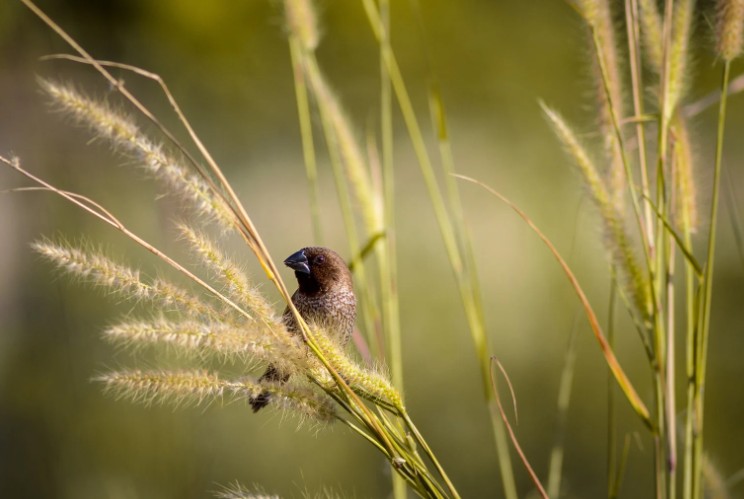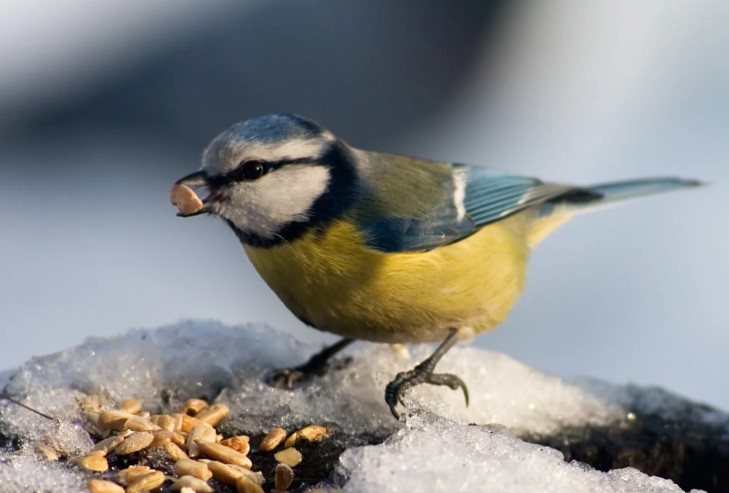- Why Do Birds Eat Grass Seed and Why Is It a Problem in the UK?
- How to Stop Birds Eating Grass Seed? - Methods That Actually Work in the UK
- When Is the Best Time to Sow Grass Seed in the UK Without Attracting Birds?
- Can I Use Netting or Covers to Protect Grass Seed from Birds?
- Does Mulching Work to Deter Birds?
- What Natural or DIY Bird Deterrents Can I Use?
- Should I Use Bird Repellent Spray or Pellets?
- How Long Do I Need to Protect Grass Seed from Birds?
- What Mistakes Should I Avoid When Protecting Grass Seed?
- My Grass Seed Was Eaten by Birds – What Should I Do Now?
- What Are My Final Tips for Maintaining a Healthy Lawn in the UK?
- Conclusion – How I Successfully Protected My Lawn from Birds?
- Frequently Asked Questions On How to Stop Birds Eating Grass Seed
When I first tried to reseed my lawn, I was surprised how quickly birds swooped in and gobbled up the grass seed I had just sown. It felt like all my effort and money was being wasted before the seeds had a chance to germinate.
After several attempts and a lot of trial and error, I found reliable ways on how to stop birds eating grass seed — methods that actually work here in the UK climate.
In this guide, I’ll walk you through what I learned, step by step, so you can successfully protect your newly seeded lawn from hungry birds.
Why Do Birds Eat Grass Seed and Why Is It a Problem in the UK?
In the UK, birds such as sparrows, blackbirds, and pigeons are naturally attracted to freshly sown grass seed.
It’s an easy meal for them — seeds are exposed on the soil surface, and the open garden space gives birds clear access.
This becomes a major issue because:
- Grass seeds are expensive, and you’ll need to reseed if they’re eaten.
- Birds disturb the soil while pecking, which displaces even the untouched seeds.
- If too many seeds are eaten, your lawn won’t establish properly.
Due to the UK’s mild and often wet climate, reseeding is common during spring and autumn — seasons that also see increased bird activity.
How to Stop Birds Eating Grass Seed? – Methods That Actually Work in the UK
After struggling with birds eating my seed multiple times, I discovered a few proven techniques. Here’s what finally worked for me:
- Physical barriers like netting or floating row covers
- Mulching with straw to hide the seeds
- Bird deterrents using shiny or moving objects
- Timing the seeding for early morning or cooler parts of the day when birds are less active
The key is combining more than one method to boost effectiveness.
When Is the Best Time to Sow Grass Seed in the UK Without Attracting Birds?
From my experience, early autumn (late August to mid-October) is ideal. The soil is still warm, rain is more frequent, and birds are slightly less aggressive than in spring.
Spring sowing is also possible (March to May), but the bird population tends to be more active then due to nesting season. If you choose spring, be extra vigilant with your protection methods.

Can I Use Netting or Covers to Protect Grass Seed from Birds?
Yes, netting for grass seed was a game-changer for me.
Here’s what I learned:
- Use lightweight mesh or garden fleece to cover the seeded area.
- Leave enough space above the soil so seedlings can grow.
- Secure the netting at the edges with pegs or stones to prevent birds from lifting it.
Pros:
- Physical protection
- Easy to install
- Can be reused
Cons:
- Needs removal once grass starts sprouting
- May trap leaves or debris
Does Mulching Work to Deter Birds?
Yes — and straw mulch for grass seed is one of the most effective options.
After spreading the seed, I lightly scattered straw across the area until about 50% of the soil surface was covered. This kept the seeds hidden from birds while still allowing sunlight and water through.
Other mulch options:
- Compost (in a light layer)
- Grass clippings (sparingly, to avoid smothering)
- Jute matting (biodegradable and effective)
Important Tip: Don’t use heavy mulch; it can prevent germination.
What Natural or DIY Bird Deterrents Can I Use?
I experimented with a few DIY bird deterrents, and some worked better than others.
Here are some ideas you can try:
- Reflective CDs or foil tape: Hang them from nearby trees or sticks
- Plastic owls or hawks: Move them every few days to maintain their effectiveness
- Wind chimes: The sound deters smaller birds
- Pinwheels or garden spinners: Their movement and shine scares birds off
Pro Tip: Combine at least two of these for better results.

Should I Use Bird Repellent Spray or Pellets?
I personally avoid chemical sprays, especially since I have pets. However, organic bird repellent pellets are available in the UK that are pet- and wildlife-safe.
Things to consider:
- Read labels carefully
- Avoid anything that might affect seed germination
- Reapply after rain
If you’re using pellets or sprays, combine them with other protection methods.
How Long Do I Need to Protect Grass Seed from Birds?
Typically, grass seed germinates in 7 to 21 days, depending on the type and weather.
Here’s a rough germination timeline I follow:
| Grass Type | Germination Time (Days) |
| Ryegrass | 5–10 |
| Fescue | 7–14 |
| Bentgrass | 10–21 |
| Mixed UK blends | 7–14 |
I usually keep protection in place until the grass reaches 2 inches high. At that point, birds lose interest because the seeds are no longer exposed.
What Mistakes Should I Avoid When Protecting Grass Seed?
Here are some common errors I’ve made (so you don’t have to):
- Skipping soil preparation – compact or poor soil affects germination.
- Overwatering – puddling exposes seeds.
- Leaving large gaps in netting – birds can easily sneak through.
- Using thick mulch – smothers the seed and blocks light.
- Not rotating scare tactics – birds get used to static objects quickly.

My Grass Seed Was Eaten by Birds – What Should I Do Now?
If birds wiped out your seed, don’t worry — I’ve been there.
Here’s how I fixed it:
- Rake the soil lightly to prepare it again
- Reapply fresh seed, and use a roller or board to press it in
- Cover it properly this time (netting + mulch)
- Water consistently, especially in the first two weeks
Avoid reseeding in harsh frost or extreme wet weather — aim for mild, calm days.
What Are My Final Tips for Maintaining a Healthy Lawn in the UK?
Once your lawn is established, keep it healthy to avoid bare spots (which birds target for easy access). My regular UK lawn maintenance routine includes:
- Mowing once a week during growing season
- Fertilising 2–3 times a year
- Overseeding thin patches every spring
- Aerating the lawn each autumn
This not only keeps your grass lush but also reduces future bird-related problems.
Conclusion – How I Successfully Protected My Lawn from Birds?
Looking back, the biggest difference came when I started using multiple protection methods together.
By combining netting, mulching, and simple DIY deterrents, I was finally able to stop birds eating grass seed on my lawn.
It took a little patience, but the result — a thick, green lawn — was absolutely worth it. If I could do it, so can you.
Frequently Asked Questions On How to Stop Birds Eating Grass Seed
1. Can I use fake snakes or owls to scare birds off my lawn?
Yes, but they work best when moved frequently. Birds will learn to ignore them if left in one place too long.
2. Are certain types of grass seed more resistant to birds?
No grass seed is bird-proof, but coated seeds are slightly less appealing. However, they still need protection.
3. Can I sow grass seed in winter in the UK?
It’s not ideal. The cold slows germination, and birds can easily eat the dormant seeds. Wait until early spring or autumn.
4. Is bird damage covered under lawn seed warranties or guarantees?
Typically no. Most seed warranties exclude damage by wildlife, so protecting your seed is up to you.
5. How can I attract birds to my garden without risking my grass seed?
Use bird feeders placed far from the lawn. This gives birds an alternative food source while keeping them away from seeded areas.


0 Comments